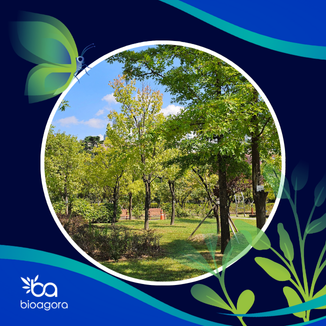Europe’s cities now have a powerful new resource to accelerate the design, implementation, and monitoring of Urban Nature Plans and urban greening strategies. The newly published Handbook of Tools for Informing and Monitoring Urban Greening Strategies and Nature Plans - developed through the Science Service for Biodiversity, an initiative supported by BioAgora in collaboration with the EC Knowledge Centre for Biodiversity (KCBD) - offers a practical overview of 59 digital tools that can help cities strengthen biodiversity and climate resilience.
Developed in response to a policy request from the European Commission’s Directorate-General for Environment (DG ENV), the handbook, its accompanying database, and an interactive online tool recommender map and assess a wide range of planning-support tools. These include simple dashboards, benchmarking frameworks, exploratory spatial tools, specialised modelling software, and comprehensive spatial decision-support systems. Together, these resources help local authorities meet the objectives of the EU Biodiversity Strategy for 2030 and the Nature Restoration Regulation (NRR).
“Our goal is to equip local authorities and urban planners with practical, widely used software, methods, and modelling approaches - helping them map green infrastructure, assess biodiversity and ecosystem services, and monitor how their urban strategies and plans affect nature and people,” said BioAgora’s M. Susana Orta-Ortiz (University of Trento), one of the focal points and editors of the report.
A Practical Guide for Urban Decision-Makers
The handbook evaluates each tool’s ease of use, costs, data needs, policy relevance, and technical requirements. Tools are grouped into five functional clusters:
- Benchmarking tools
- Exploratory tools for spatially explicit challenges
- Policy-support tools
- Specialised modelling tools
Multi-purpose spatial decision-support tools
Real-world case studies - from Lisbon, Leipzig, Glasgow and Birmingham - demonstrate how these tools are already enabling greener and more resilient cities. Examples include restoring pollinator habitats, cooling urban heat islands, improving access to green spaces, and integrating biodiversity considerations into urban development.
The online tool recommender enables users to identify the best tools based on their policy questions, available data, planning stage, and technical capacity.
Supporting the European Nature Restoration Agenda
The handbook directly supports the implementation of the Nature Restoration Regulation (NRR), particularly Article 8 on urban nature, by providing clear, evidence-based instruments for planning, implementing and monitoring greening actions at the local level. It also serves as a resource for the development of Urban Nature Plans, a key component of both the NRR and the EU Biodiversity Strategy for 2030.
Access the Publications here:
Handbook here.
Database here.
Tool recommender here.
All resources are also integrated into the BioAgora website here and the Knowledge4Policy webpage of the KCBD to maximise visibility and reuse.
